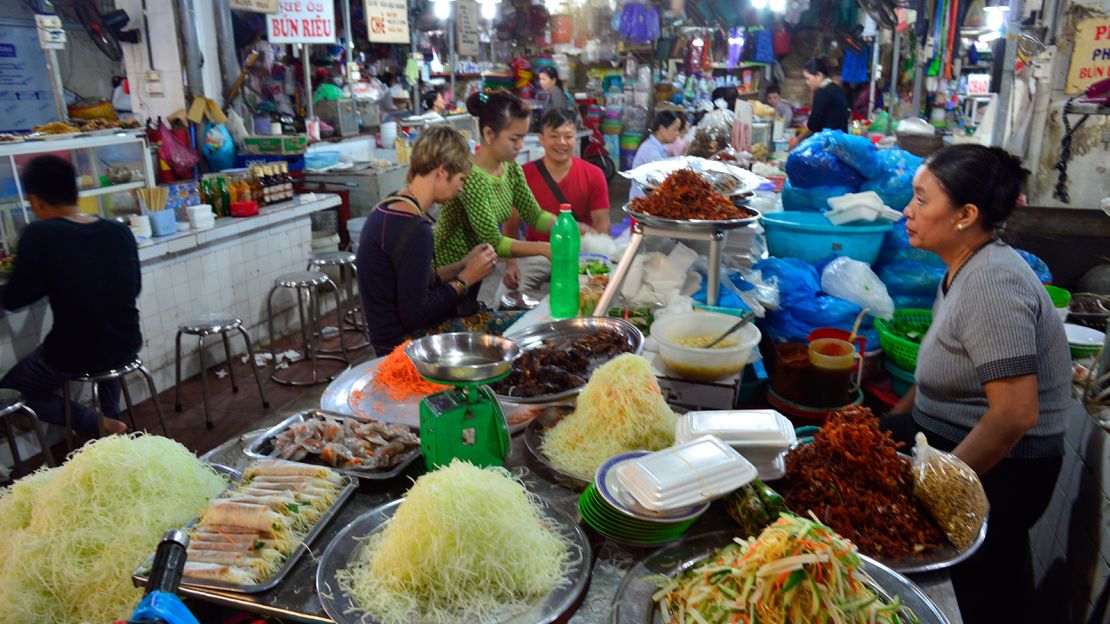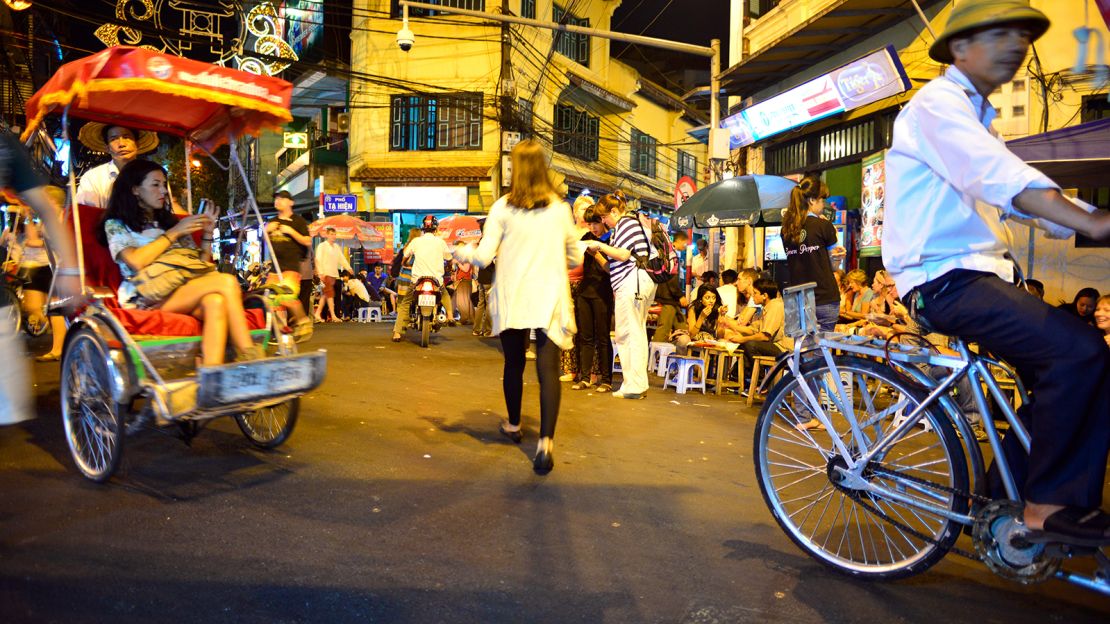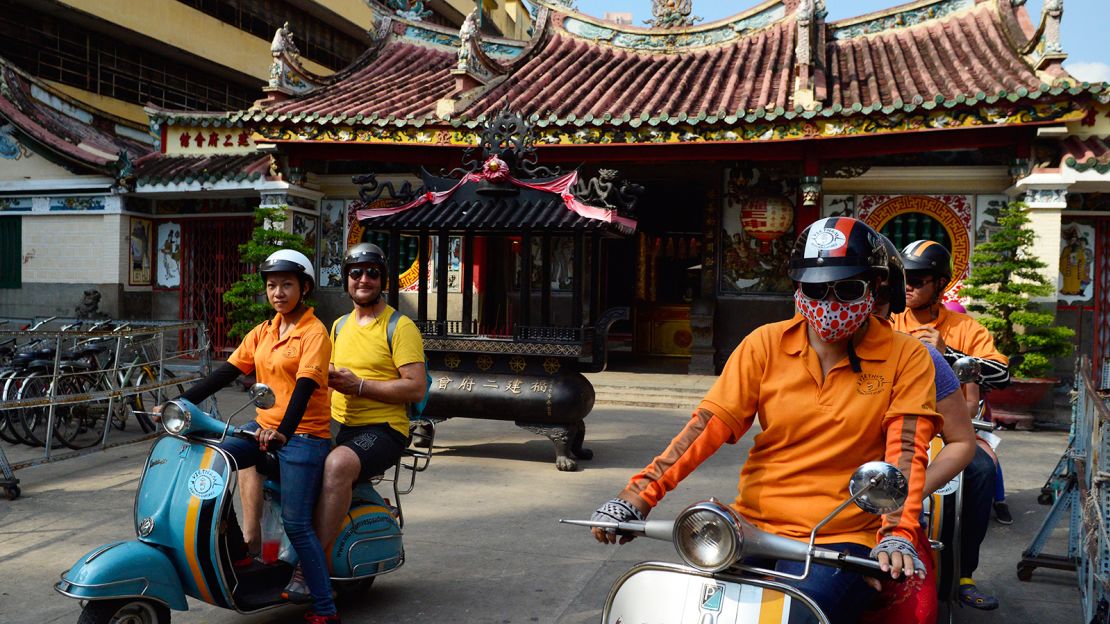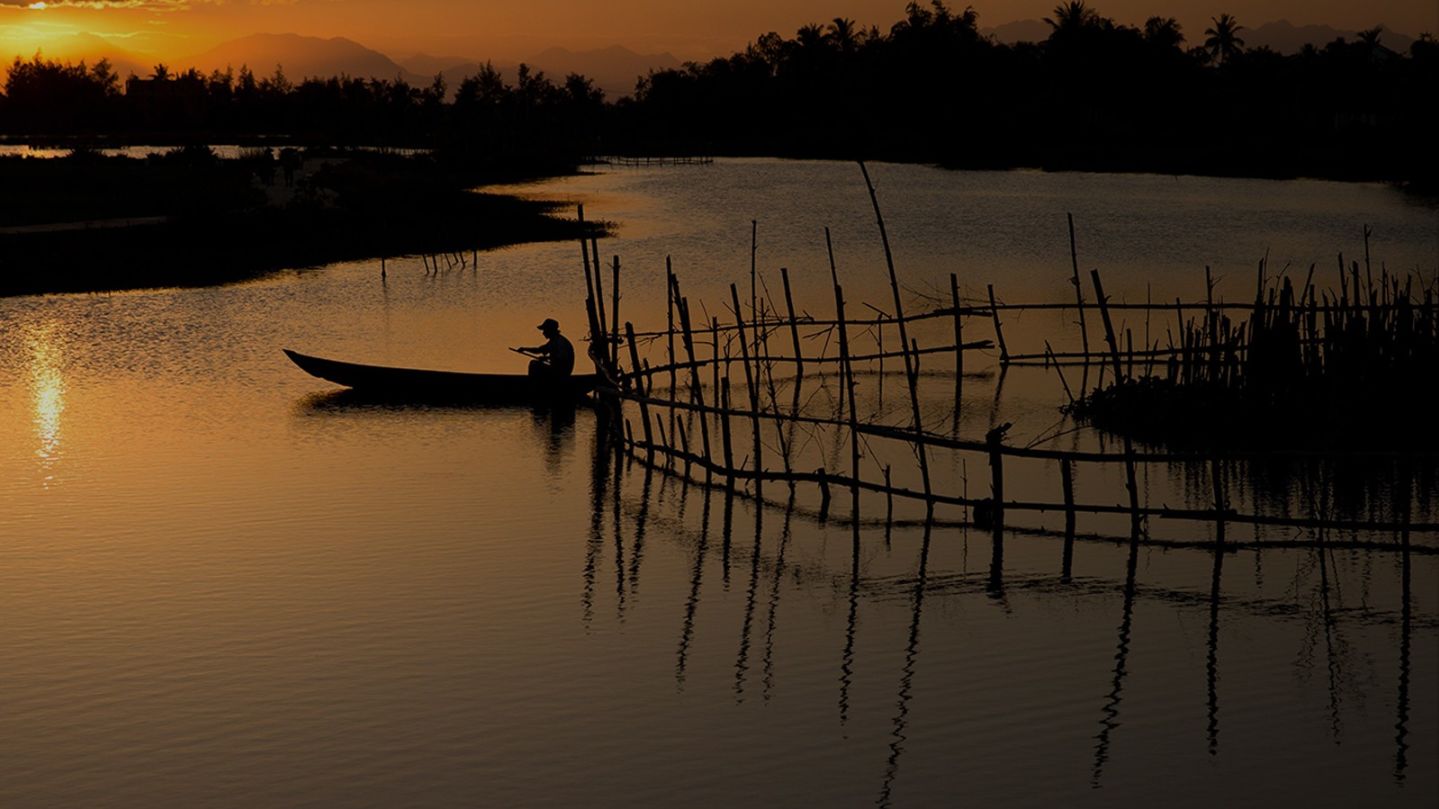With history stretching back 4,000 years, Hanoi has long been one of Asia’s most appealing destinations.
But young upstart Ho Chi Minh City – a mere baby at just 300 years – has more than her share of devotees, too.
We take a look at these two very different destinations in Vietnam and compare their characters from the viewpoints of some of the people who know them best.
Hanoi

As the old Jeep honks, a row of street vendors swivel their conical hats like a field of swaying sunflowers.
“There are four things you need to focus on when you come to Hanoi,” the driver shouts over the cough of the engine. “History, culture, food… and fun.”
A couple of days exploring this tangled patchwork of lakes, stitched together with shady alleyways, is enough to leave your head spinning with a sense of the culture and history that pervades this ancient city.
And food and fun are never far away in Hanoi either.
Cuong Phung, who once guided Ewan McGregor and Charlie Boorman around his hometown, presses the accelerator as the Jeep cruises around the shoreline of Hoàn Kiếm Lake.
Known as the Lake of the Restored Sword, Hoàn Kiếm is perhaps the most beautiful of Hanoi’s 20 lakes and is home to a mythical giant golden turtle.
The best cities for visitors are often those that can be tackled in bite-sized chunks and Hanoi, the City of Lakes, is so neatly divided up by water that this metropolis of almost 8 million people often feels more like a sprawling chain of interlinked villages.
The Jeep rumbles down a side street and within minutes Cuong is passing the colonial facade of the venerable Sofitel Legend Metropole Hanoi where Graham Greene penned “The Quiet American” and where Jane “Hanoi Jane” Fonda experienced the terror of B52 bombs (15 Phố Ngô Quyền, French Quarter, Hoàn Kiếm, Hanoi City 10000; +84 24 3826 6919).
Somewhere near Hỏa Lò Prison Museum (1 Hỏa Lò St, Hoàn Kiếm, Hanoi City 10000; +84 4 3934 2253) – once known, with icy humor, as the “Hanoi Hilton” – Cuong stops to refuel.
It isn’t petrol that’s required, however, but the deliciously rich and potent filter-coffee known as cà phê phin.
The French might have introduced coffee, but the Vietnamese perfected it. Hanoi’s café culture, in particular, is an experience not to be rushed.
A great way to tap the soul of this timeless city is to spend an hour or more at one of the countless roadside coffee shops and watch the world go by. For an imaginative variety of coffees – try added coconut milk, yoghurt or egg white – head for one of the Cộng Cà Phê establishments, ultra-cool Vietnamese hipster hangouts decorated with fascinating collections of Viet Cong wartime memorabilia.
Vietnam had so many wars (Chinese, Japanese, French, American, Cambodian and Chinese again) that for them there is no such thing as the Vietnam War – it was the American War.

“Hanoi is a traditional city, with quite a bit of Chinese influence in the cuisine,” says Vietnamese foodie Vu Vo. “In the north, people prefer braised or boiled dishes and use a lot of ginger, spring onion and pepper as flavoring.”
As the sun begins to sink and Chinese lanterns flicker around the old-town, locals and travelers head to the intersection of Tạ Hiện and Lương Ngọc Quyến Street, where a barricade of low plastic stools forms the perennial nocturnal roadblock that is famous here as “Beer Junction.”
This area has become a veritable street-life festival where icy glasses of excellent bia hoi (as the local brew is called) are served for about US 20 cents. Rumor has it that Iron Curtain-era Czech engineers first taught the people of Hanoi to brew their own beer.
“It’s hard to believe when you sit at Beer Junction,” smiles Cuong.
“But us northerners are considered too serious by the people of the south. Meanwhile, the people of Hanoi sometimes say that the southerners are frivolous and lazy. We might be different but people are incredibly friendly all over the country. And, no matter where you go, Vietnamese know how to have fun.”
Ho Chi Minh City

“There’s only one way to cross the street in Saigon,” says Mario Orellana, who runs Vespa Adventure tours in Ho Chi Minh City.
“Stay calm, keep moving forward slowly and never run.”
Few residents of Vietnam’s vibrant southern metropolis would refer to their city as Hồ Chí Minh. From the moment you arrive at Ga Sài Gòn Railway Station you quickly learn that it’s more convenient to refer to the city by its old name.
By any name at all, Saigon lives up to all expectations. The pillion-seat of one of Orellana’s classic Vespas offers the perfect vantage point for a whirlwind view of Saigon’s frantic Chinatown lanes.
Colorful, chaotic and thoroughly enchanting, this city grasps you by the collar and shakes you with its energetic exuberance.
“Vietnam spans a vast distance from north to south, encompassing different landscapes and climates which have naturally given birth to different cultures,” art tour guide Sophie Hughes explains.
“Hanoi, the country’s capital, and its southern counterpart, Saigon, are reflections of this. The character of each city bursts through in the food, the customs, the art and endless but highly addictive chaos.
“It’s more than 40 years since the end of the American War, but in Vietnam people have a way of looking forwards, never backwards.”

Hughes’s tours transcend the world of art and offer an insight into the country’s history, and its very soul, in an unusually evocative and thought-provoking way through ancient, colonial, war-era and contemporary art.
The French influence is most notable downtown – in the Notre Dame Cathedral, the Post Office and the Opera House.
The notable buildings that became famous during the American War era are the Continental Hotel, where the correspondents stayed and the Rex Hotel, where the US military conducted the daily press briefings, known as the “five o’clock follies.”
From street level, one of the best places to soak up the essence of Saigon’s history is on Lê Công Kiều, universally known as Antiques Street.
“Every shop is full of curiosities, junk, haunting old family photographs and antiques of questionable provenance,” Hughes explains. “Around the corner on Nguyễn Thái Bình Street is Hoàng Thị Café, a great little spot full of art and excellent Vietnamese coffee.”
Wherever you travel in Vietnam you’ll find that food is an unmissable highlight of the trip, and a perfect way to digest the mysteries of such exotic cuisine is through a food tour.
“I may be biased as a proud southerner, but I think Saigon is a more exciting city than Hanoi for foodies,” says Vu Vo, founder of Saigon Street Eats.
“it’s a melting pot, with French, Chinese, Thai, Khmer and even Indian influences. The climate is hot all the time, so – whether you’re eating street-food or high-end dining – there’s lots of fresh herbs and greens available year-round.”
Here in the tropical south the day starts early and the local markets open around dawn.
“A market is the best way to start the day and to see local life in action,” Vu continues. “Perhaps the best way to end a day in Saigon is at a rooftop bar (the latest trend here), enjoying a sundowner and watching the city change as day fades into night.
“The Hanoians are right in what they say about us: we do like to party and nothing helps a party along better than a Saigon street-side barbecue… and a couple of bottles of Saigon beer.”
















